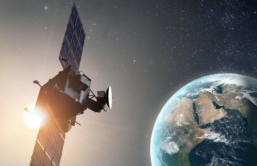Researchers looked at an exoplanet that grew up with four parent stars, providing insight into these types of complicated and largely unstudied solar systems.
The finding is only the second in the history of science to identify a quadruple star system, NASA's Jet Propulsion Laboratory (JPL) reported. The findings, made using the PALM-3000 adaptive optics system, suggest these types of systems might not be as rare as we thought they were. The planet had already been discovered, but until these observations, researchers had thought it only had three parent stars.
"About four percent of solar-type stars are in quadruple systems, which is up from previous estimates because observational techniques are steadily improving," said co-author Andrei Tokovinin of the Cerro Tololo Inter-American Observatory in Chile.
The four-star planetary system, dubbed 30 Ari, exists 136 light-years away in the Aries constellation. The planet looked at in the study is gaseous, and about 10 times the size of our largest planet, Jupiter; it orbits its primary star once every 335 days. This star has a "close neighbor" (that the planet does not orbit); these two stars together orbit another pair of stars that is located about 1,670 astronomical units away.
"Star systems come in myriad forms. There can be single stars, binary stars, triple stars, even quintuple star systems," said Lewis Roberts of JPL, lead author of the new findings appearing in the Astronomical Journal. "It's amazing the way nature puts these things together."
Past evidence has suggested that stars can influence the orbit and even size of nearby planets, these findings could provide insight into how this phenomenon would differ in solar systems containing multiple stars. The researchers do not believe the newfound star in the 30 Ari system has had an influence on the orbit of the nearby hot Jupiter, and in the future they hope to determine why these changes did not occur.








